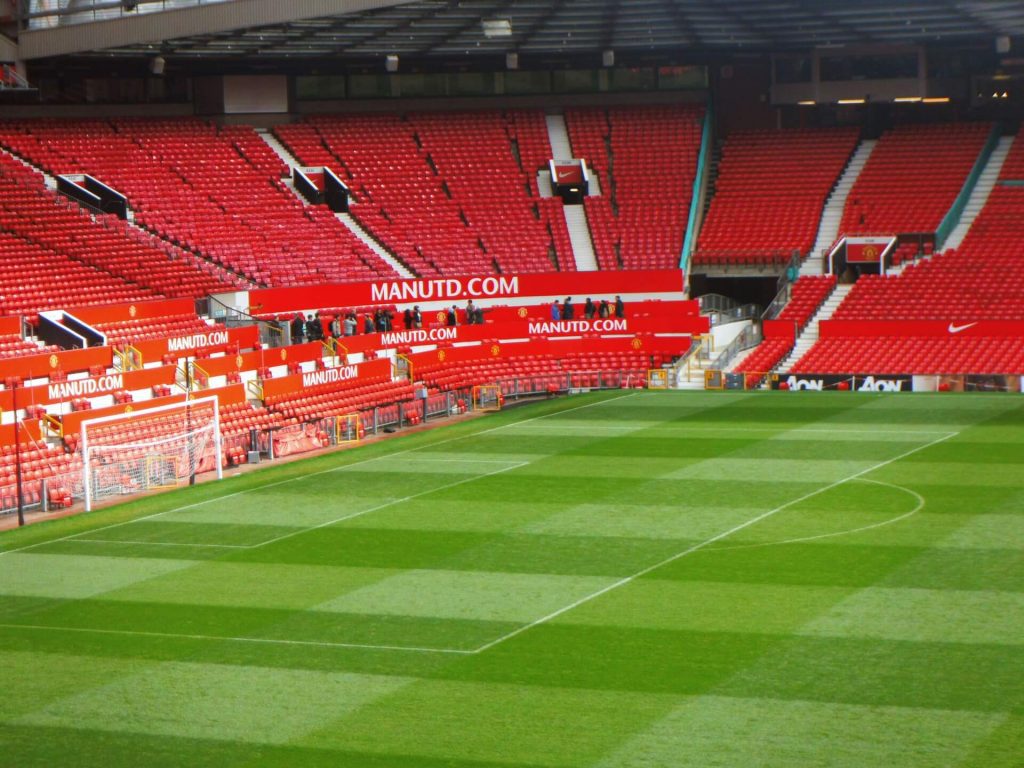Why does Manchester have a bee as its symbol?
Have you ever wondered why there are bees all over Manchester? Or maybe you’ve never visited our city before but you’ve seen the bee on some Manchester-associated logos. This tiny creature is the perfect representation of the very heart and history of Manchester, which we’d like to share with you today.
Of course, we’d prefer to share this insight and stories about the city in person during one of our Manchester food tours! If you’re visiting soon and love to learn about local culture while enjoying local fare, get in touch and let’s explore together.
What does the Manchester bee represent?
The Manchester bee is all about the true story of the city. Back in 1842, the worker bee was added to the new Manchester coat of arms. Those little bees represent so much about the way Manchester forged a new path for itself during the Industrial Revolution.
In fact, did you know the global Industrial Revolution actually began right here in Manchester? We wrote all about it if you’re keen to learn more: Why Did The Industrial Revolution Start In Manchester?
The Manchester bee represents the hardworking Mancunians and the hive of activity that Manchester became during this era. As industry changed this city, so it changed the entire world. As a single bee contributes to the hive, so do all Mancunians contribute to the fascinating, diverse, fabulous city that we all call home.
Speaking of Mancunians…you did know that’s what the people of Manchester are called, right?
Going Beyond Industrial Manchester
In case you didn’t yet know, you have Manchester to thank for a great many things! From The Stone Roses to Alan Turing, football to Vimto to the Manchester tart…the creativity and industriousness of Mancunians is something of a wonder.
But, of course, while the worker bee represents Manchester, we definitely leave room for leisure pursuits beyond work.
Just explore the Northern Quarter today, which is a hive of culture and food beloved by locals and visitors alike. Or head to the People’s Museum to learn about the many social justice causes Mancunians have fought for over the generations.
We may be well represented by the bee, but Manchester is truly so much more beyond industry and work! Check out some of the places you can visit for free in Manchester and learn more about our history and contributions to the world.
Where to Find Manchester Bees in the City
If you’re coming to visit Manchester, you’ll almost certainly stumble upon the bee in various spots throughout the city. But there are a few in particular that you may want to seek out. And we also recommend asking your tour guide during your foodie tour of Manchester where their personal favourite bees are – they’ll surely have some suggestions!
At Manchester Town Hall, you’ll find a variety of bees both inside and outside the iconic building. First, look for the bees in the coat of arms above the main entrance at Albert Square. Notice anything different about the number of bees here versus the modern coat of arms? That’s right – there are only 5 here versus the normal 7 bees!
Inside Manchester Town Hall, you must seek out the Great Hall to see the stunning mosaic floor. There are an astonishing 67 bees on this marble floor, the designs for which became the common design for bees elsewhere in the city.
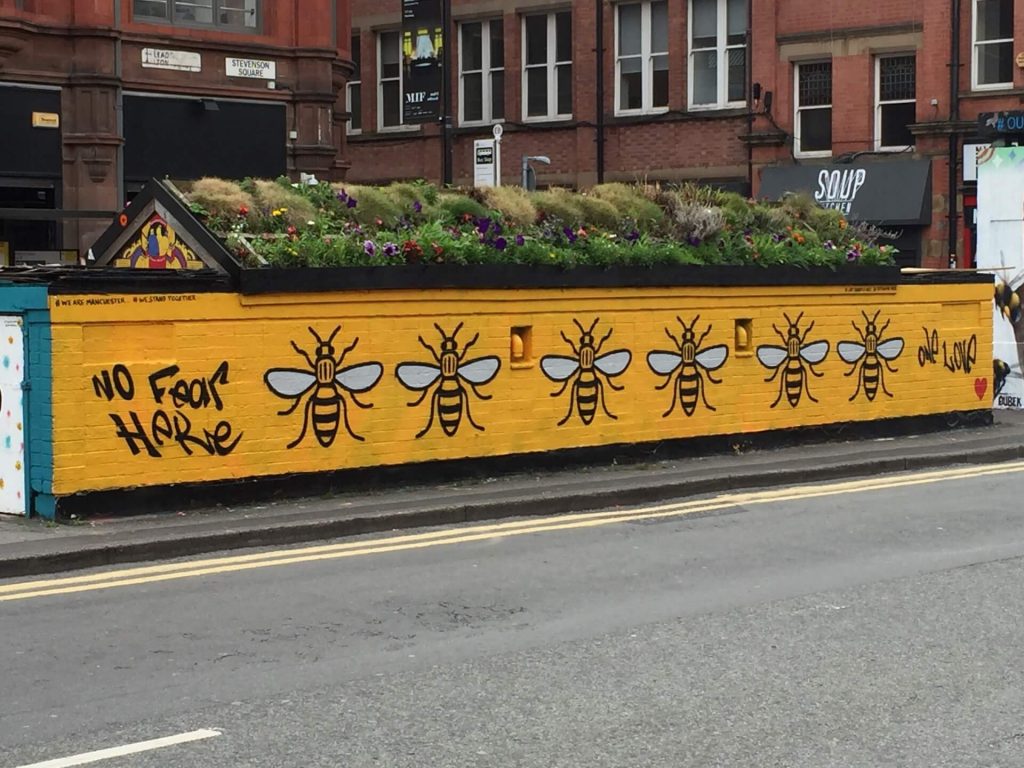
Those common designs can be spotted on flower boxes, bollards, and sign posts across the city. But – perhaps these are our favourite bees here at Manchester Bites – we like to spot bees at our favourite places to eat! From menus to window decals to murals to integrating bees into a logo, we love trying to spot them at our local haunts.
We also love to share our favourite eats with visitors, so come join us on a walking tour!
Manchester Bees as Symbols of Unity
While the Manchester bee was originally incorporated into the city’s coat of arms as a symbol of industriousness, the bee has taken on much greater significance in recent years. After the tragic Manchester Arena attack in 2017, the bee became a symbol of unity.
In honour of the 22 lives lost that day, 22 worker bees were painted on the side of the Koffee Pot building in the Northern Quarter. That mural shared the feeling across the city: that Manchester is unified and strong and will always work together for the greater good.
Since then, the bee has been such a powerful representation of everything Mancunian. This city is a hive of activity, a collaborative environment, and a hard working community. We stick together and we are Manchester Strong.
Come see for yourself! We’d love to share even more stories about the people and places that make Manchester such a thriving cultural hub. Get in touch if you want to book a tour or learn more.

Why Did the Industrial Revolution Start in Manchester?
Manchester today is a city renowned for a long history of innovation, where the citizens’ imaginations seem to fire like nowhere else. Whether it is in the cause of social justice, the creative realms of music, art, or literature, or in the hard sciences, Manchester seems to push things forward. And there is no better illustration of this than in the city’s ties to Britain’s Industrial Revolution.
While the significance of industrial megacities such as Glasgow and Newcastle is not in doubt, Manchester is widely accepted to have been Britain’s first industrial powerhouse, the engine room for the seismic changes that were to take place.
Why is this? Join us today at Manchester Bites as we discuss why Manchester became the home of the Industrial Revolution.
And while you’re here, be sure to check out our Canals to Canapés Manchester food tour, which takes guests around the cobblestone streets of Manchester’s former industrial suburbs and includes 10 tastings.

The Conditions for Revolution
Before discussing Manchester’s starring role in the Industrial Revolution, it is perhaps best to outline some of the wider changes to European society that made the whole thing possible. The first major shift comes from changes to the nation’s overall population.
In the mid-eighteenth century, Britain had a modest population of about nine million; one hundred years later, by the mid-nineteenth century, the population had doubled.
This rise in population rates seems to be broadly linked to the dramatic fall of death rates: growing awareness of medical concerns began preventing infant mortalities and early deaths among adults. And, so, with more citizens came more demand! More food was required, more clothing, more jobs.
This boom in numbers drove the need for innovation: new farming techniques, a new organisation of labour. Manchester offered the perfect conditions for such industrial innovation!
In Manchester, there were canals and raw materials for production, such as iron ore and coal. In 1769, Richard Arkwright opened his first Manchester cotton factory, employing around 600 people. If there was one material at the centre of the revolution, it was king cotton. The invention of a variety of mechanical looms and weaving tools like the ‘spinning Jenny’ meant that the slow process of cotton production could be sped up inexorably.
Within only a few years, Manchester’s population grows and grows as workers regard it as the greatest of industrial cities.
Manchester is a City of Firsts
So, what came out of Manchester’s revolution? Why does the city remain so proud of its industrial roots today? Why would L.S. Lowry’s 20th-century paintings of rainy Manchester factory districts give so many people pleasure? Why do they continue to evoke a wistful nostalgia to this very day?
In part, it is certainly due to the solidarity that came with being an industrial centre.
While the factories and heavy industry boosted the wealth of their owners, the economic growth ironically meant that more men and women (and even children) were forced to work in exhausting, dangerous conditions.
But from these enormous workforces of downtrodden people came champions for the people! From campaigns against slavery to the suffragette movement calling on votes for women and the earliest animal rights groups, Manchester’s citizens have known how to get politically organised to fight for what they believe in.
The other source of pride lies in the city being the home of so many firsts — the machinery of production, Britain’s first canals, the first passenger railway, the first submarine, atomic theory, and even league football.
And all of these things are inextricably bound to the Industrial Revolution and Manchester’s place in it.
Innovation Continues in Manchester
In 2004, the world’s thinnest material (one atom thick!) was designed by two Manchester University scientists, Konstantin Novoselov and Andre Geim — a sure sign that the city’s knack for ingenuity is not on the wane.
In fact, the 20th century was a time of wild inventiveness for Manchester. The proud Mancunian author, Anthony Burgess, penned game-changing novels like A Clockwork Orange and Earthly Powers. And a seemingly endless string of musicians revitalised British culture again and again: Joy Division, the Stone Roses, Happy Mondays, The Smiths, and Oasis, among others.
The right socio-economic conditions may have set Manchester’s journey to being an industrial powerhouse on course, but by all appearances, the wheels remain in motion right up to the present day.
If you have any questions or comments concerning this blog or our tours, please do not hesitate to contact us.

What Are People From Manchester Called and Why?
What are people from Manchester called? The short answer (as you quite possibly know) is…Mancunian. The word is Latin in origin, taken from Manchester’s original Roman name, Mancunium. But what does this word really represent today? What is at the heart of that term? Manchester is one of the UK’s most visited cities (coming in behind only London and Edinburgh), and it has no shortage of things for visitors to see and do.
But more than just being a tourist destination, Manchester is a city associated with passions: sport, music, political activism, groundbreaking science, food culture, art. It is undoubtedly a certain Mancunian attitude that attracts so many to Manchester. Join us today at Manchester Bites as we list some of the unique qualities that encapsulate the people of Manchester.
Creative Manchester
Ask people to name some famous Mancunians, and it won’t take long until you begin hearing names from Manchester’s legendary music scene: Liam and Noel Gallagher, Morrissey, Ian Curtis (to name just a few).
In 1976, the Sex Pistols played Manchester’s Lesser Free Trade Hall and the gig seemed to electrify a Manchester scene that continues producing nonconforming, challenging artists up to the present day. The seventies saw the emergence of bands like The Buzzcocks and The Fall, and the creation of Factory Records, who would put out records by post-punk iconoclasts, Joy Division.
The eighties saw the formation of indie pioneers, The Smiths, whose maudlin frontman, Morrissey, mythologised aspects of Manchester life in his lyrics, and the explosion of the Madchester subculture fronted by the likes of The Stone Roses and Happy Mondays. While radio waves in the nineties were dominated by the hits of Oasis.
But music isn’t the only creative area in which Manchester excels. Lovers of the visual arts can journey to The Lowry, an expansive gallery, museum, and events space that celebrates the work of L. S. Lowry who lived more than 40 years in Salford, and who captured the enigmatic gloom and romance of the industrial north in his famous paintings.
And in the world of letters, Manchester has been equally unorthodox. The bookish among you might visit The International Anthony Burgess Foundation where a series of exhibitions celebrate the life and work of Anthony Burgess.
Perhaps most famous today for his novel Clockwork Orange, Burgess was always proud to refer to himself as a Mancunian, and, when living in Rome, he even used the Italianised form: Mancuniense.
Mancunian Competitiveness
Alongside music, sport is unquestionably one of the city’s greatest exports, a part of the Mancunian drive towards excellence. Among the best cross-city rivalries in football, the Manchester United and Manchester City derby is one of the most anticipated fixtures in the football calendar.
The Manchester United squads of the Alex Ferguson era seemed to embody much of the Manchester spirit: homegrown, creative, youthful, and set on winning right up until the final whistle. And it was also in the city of Manchester that the Football League was first dreamed up in 1888, the precursor to today’s Premier League.
But this competitive drive and knack for innovation extend beyond the playing fields. In every endeavour, the denizens of Manchester strive to achieve the supposedly unachievable.
The city was central to Britain’s Industrial Revolution, and Mancunians made up the workforce, powering the nation into the modern era. The revolution would lead to a string of world-shaking inventions in Manchester: the passenger railway, the military submarine, Britain’s first canal system.
And the 20th century saw no slowing down with Mancunians being able to lay claim to the first programmable computer, the invention of graphene, and the splitting of the atom.
Eating Out in Manchester
With a restaurant scene that’s growing faster than anywhere else in the country, Manchester can boast of a particularly rich and exciting foodie scene. Mancunians love to eat, and they love to champion experiences that are unique and unbounded.

Our own From Canals to Canapés tour showcases 10 different styles of cuisine while we tour the cobbled streets of Manchester’s historic Northern Quarter, uncovering fascinating chapters from Mancunian history as we go.
With Manchester’s long history of immigration, Mancunians can trace their roots to all corners of the globe. Census data suggests that around 100 languages are spoken across the city, and this spread of ethnic and cultural diversity is beautifully represented in the city’s culinary scene.
As Italian, Polish, Pakistani, Caribbean, Punjabi, and other groups moved into the city over the centuries, they brought their traditions with them and this is borne out on a foodie landscape to rival anywhere else.
Social Justice in Manchester
Two museums in Manchester illustrate the commitment of Mancunians to social welfare. The Pankhurst Centre is a space dedicated to the life of Emmeline Pankhurst, the political activist, most famous for being a suffragette who fought for votes for women.
Meanwhile, the People’s History Museum is the national museum of democracy. These museums do an excellent job of demonstrating Manchester’s long tradition of being a hotbed of radical ideas, a place that pushes for societal change.
This community-conscious spirit is central to much of what it means to be Mancunian. It was a dedication to the ethical treatment of animals that led to the establishment of the Vegetarian Society in Manchester in 1847. And those who follow a plant-based diet will find themselves spoilt with dining options today. Our Manchester Vegan Tour explores vegan culture across the city through eight delicious tastings.
This brings to a close our blog on all things Mancunian. If you have any questions or comments, do please get in touch.
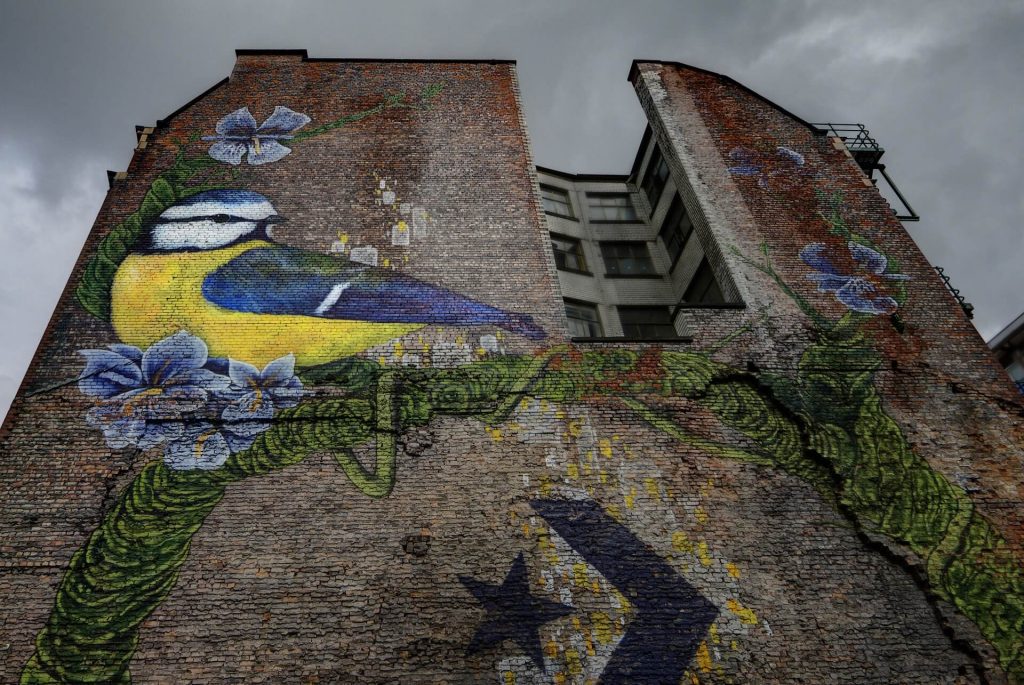
What Can You Do For Free in Manchester?
The short answer: quite a lot! As the third most visited city in the UK, it should surprise no one that the city offers travellers a wealth of things to do. But what if you are on a budget? We’re pleased to report that many of Manchester’s best-loved attractions are perfectly free, and for those looking for quiet time away from the crowds, the city is also home to a range of parks and green spaces.
Join us at Manchester Bites for a list of some of our favourite things to do for free in Manchester. And if all the exploring works up an appetite, why not join us for one of our Foodie Walking Tours of Manchester, where we dive into Manchester history and culture while enjoying plenty of the delicious food served up across the city.

Travel Through Time in Manchester Museums
Manchester is home to around 50 museums and, happily, many are free to enter! The quandary that visitors will have is picking which museums they want to prioritise.
Manchester is widely known as one of the birthplaces of the Industrial Revolution and has produced a long list of revered scientists and inventors, such as Alan Turing who is credited with developing one of the world’s first computers.
The Manchester Museum of Science and Industry is located in the city centre and provides an interactive insight into the city’s past. Nearby, the People’s History Museum uncovers Manchester’s proud tradition of fighting for social justice and political equality.
Similarly, the Pankhurst Centre focuses on the groundbreaking life of Emmeline Pankhurst, who pushed Britain to extend voting rights for women.
A little outside the city centre, the Imperial War Museum North and the Museum of Transport are sure to fascinate the whole family. Centuries of human history to discover, and all for free!

Manchester’s Northern Quarter
Manchester’s legendary Northern Quarter is known for its creative energy — pubs and cafes playing good music, indie shops selling vinyl records and secondhand clothing.
Even if you don’t want to spend money, it’s worth exploring the Northern Quarter for its mix of architectural styles and to soak up the general atmosphere of the place, an atmosphere that is quintessentially Manchester. Grab a coffee and watch the world go by in this vibrant part of town.
If you are open to the idea of a little retail therapy, Afflecks is not to be missed. Describing itself as an “eclectic emporium” and a “totem of indie commerce”, Afflecks is an indoor market housing around 70 independent businesses in an evocative Victorian building.
Our Manchester Food Tour — From Canals to Canapés takes visitors around the Northern Quarter, journeying through Manchester history via 10 unforgettable tastings.
Manchester’s Historic Libraries
Manchester can lay claim to many innovations (atomic theory, league football, rail travel) and this entry will let you delve into one specifically. Opened in 1653, Chetham’s Library in Manchester is the English-speaking world’s oldest public library.
Established under the will of textile merchant Humphrey Chetham, the library was intended for the use of young scholars and it remains a free, functioning library to this day. Book a free tour online at the library’s website to experience the medieval buildings and gorgeous wood-lined interiors for yourself.
Elsewhere in the city, the neo-Gothic John Rylands Research Institute and Library is a must-see site for bibliophiles and lovers of fantasy — the shadowy interiors, stained glass windows, and rare books won’t fail to fire the imagination.
Manchester’s Parks and Walkways
If you’re in Manchester city centre and feel like taking a breather, head to the Cathedral Gardens where you’ll find a spot of quiet amongst the city’s bustle. Also in the centre, Whitworth Park and Piccadilly Park make two fine options for enjoying some time outside, watching the world go by.
If you find yourself in Manchester during a spell of sunny weather and want to spend the day outside, then head to Heaton Park, the Greater Manchester area’s largest park. Heaton Park has areas for playing sports and its very own boating lake — families can easily spend a cost-free, healthy and restorative day here picnicking on the grass (weather permitting!).
And for those who love exploring an urban environment on foot, Manchester has lots of wonderful trails crisscrossing the city. A collection of some of the most popular routes is gathered here.
Manchester’s Art Galleries
Our final recommendation is to traverse Manchester’s fantastic art galleries, many of which are free to enter. In a city most famous for its rock stars and footballing wizards, it should come as no surprise that Manchester’s love of all things creative extends to the art world, with the city hosting a plethora of galleries stacked with wonders.
Our first choice is the Whitworth Gallery, home to over 55,000 artworks and including British giants like William Blake, and classic modern painters like Van Gogh and Picasso. The Whitworth ranks among the very best galleries in the country.
The city’s main gallery is the Manchester Art Gallery, which also houses a range of masterpieces, including an impressive collection of Pre-Raphaelite works. Or, if you want to brush up (forgive us!) on the paintings of a local artist, visit The Lowry, which is a fascinating insight into the career of L.S. Lowry, one of the city’s famous residents.
This brings to a close our list of just some of the best things to do for free in Manchester. We hope we’ve given you some ideas for your next visit to this marvellous city. If you have any questions about this blog or our tours, please do not hesitate to contact us.

What Is Manchester Famous For?
Manchester is one of the UK’s most widely known and well-loved cities. Having been one of the engine rooms of Britain’s industrial revolution, given birth to countless artists and musicians, and produced a staggering 25 Nobel Prize laureates, Manchester’s historical significance is firmly established. However, the creativity at the heart of so much of Manchester’s story continues to flourish today. Manchester is a beautiful blend of tradition and innovation, possessing a vitality that means lists like this one will surely get longer with each passing decade. That being said, as proud Mancunians, we’ll take any opportunity to discuss the things that make Manchester special, so please join us for some of the things that made, and continue to make, Manchester famous. And while you’re here, you may want to browse our Manchester Food Tour — From Canals to Canapés, which gives a history of our city through 10 tastings and explores a couple of the city’s coolest areas.
Creativity
Manchester has long been established as a cultural hub, a city that seems to speak to the creativity in its citizens and inspire collaboration. One need only take a cursory look at a history of the city’s music scene to appreciate just how many world-famous musicians the city has produced: Joy Division and New Order, The Smiths, The Stone Roses, Oasis, Elbow… The list goes on, and we’re pleased to say new bands are forming all the time. Art lovers, meanwhile, have long associated Manchester with the work of LS Lowry, who lived for many years in Salford. Today, Manchester is home to The Lowry, a museum and exhibition space dedicated to his inimitable paintings. And to see this famous creativity on display today, visitors should head over to the Manchester Craft and Design Centre. Housed in a Victorian former fish market, the Craft and Design Centre has been nurturing creative talent and businesses since 1982. We wrote a blog dedicated to the centre here. Whatever your own creative passions, Manchester is a city that will inspire.
Culinary Diversity
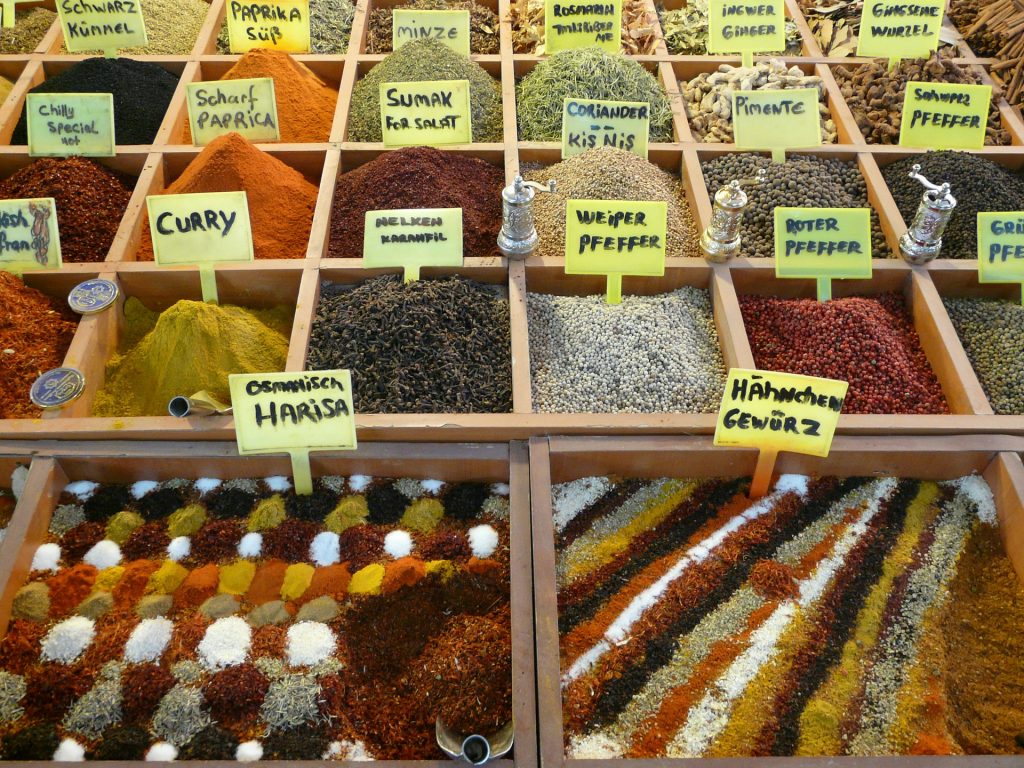
We could talk at length about Manchester’s long and proud history of liberalism, openness, and tolerance and some of the famous trail blazers the city has produced like Emmeline Pankhurst and Alan Turing, but, given our tours’ focus on Manchester’s food scene, let us mention in particular the diversity that shines through Manchester cuisine, which provides a fine glimpse into the 21st century fabric of the city. Surveys indicate that around 200 languages are spoken in Manchester today. The city continues to flourish as a multicultural population as it has done historically when Irish, Caribbean, and Asian communities came to call Manchester home. The city’s food culture celebrates this cultural brew and diners have available to them a veritable world atlas of flavours (the Manchester Evening News were even able to compile an A to Z country list of Manchester dining possibilities, from Armenia to Zimbabwe!). From the Curry Mile to the 2nd largest Chinatown in the UK, award-winning sushi to Mexican street food, Manchester today is known far and wide for a food culture diverse enough to rival any other city.
Football
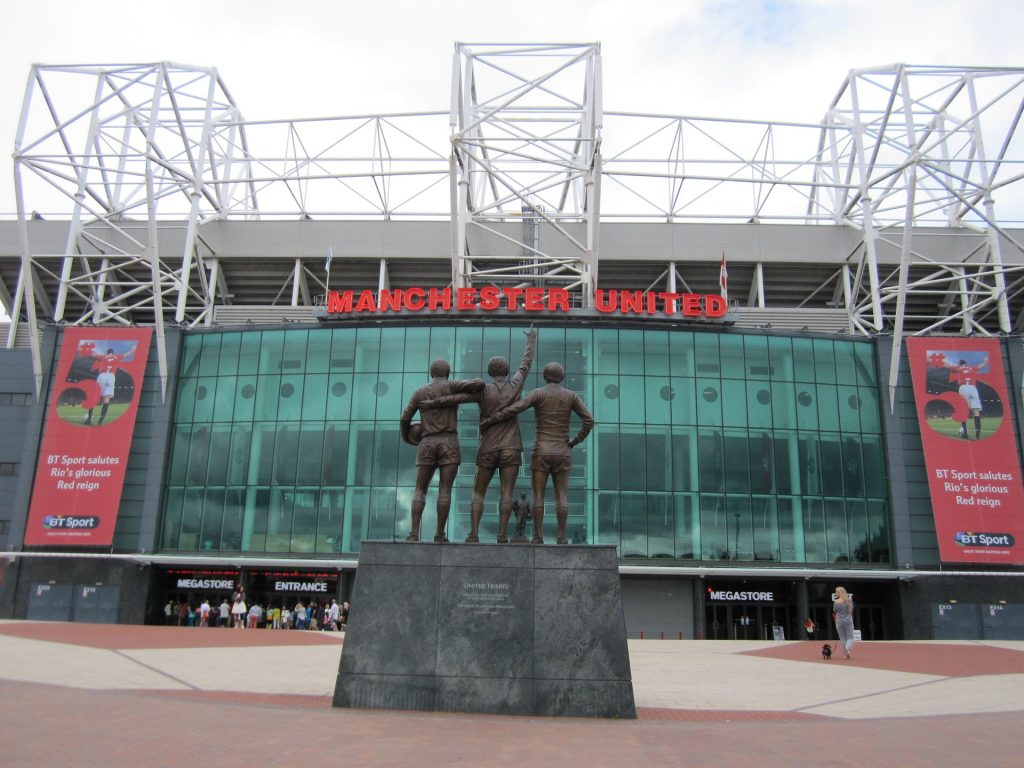
Perhaps ranking higher on the fame charts than anything else, Manchester is famous for football and the city’s dominant position in the sport only looks set to continue. Home to Manchester United, the most successful club in English football history, and their rivals Manchester City, who have enjoyed a meteoric rise in recent years, bagging one trophy after another. It’s no exaggeration to say Manchester is one of the world’s great footballing cities. The roots of football in Manchester stretch back to the late 19th century and the very founding of the modern game. Today the city is host to the National Football Museum, an expertly created collection that gives a fantastic insight into the history of ‘the beautiful game’. Manchester United and Manchester City also both offer tours of their famous stadiums, Old Trafford and the Etihad Stadium, respectively.
Traditional Bites
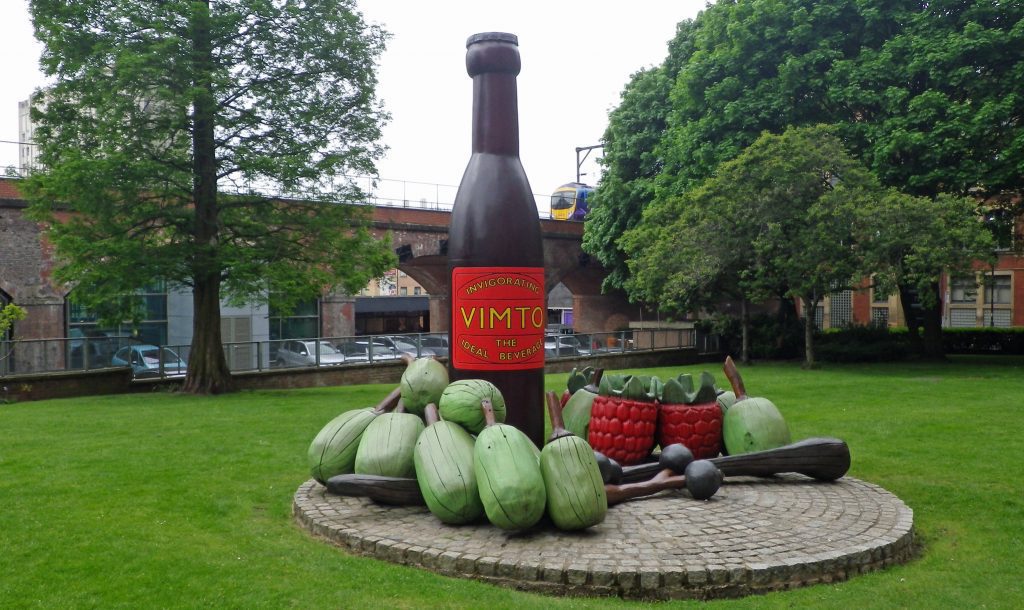
As we said at the beginning, Manchester harmoniously blends the old with the new, the innovative with the traditional. For all the boundary pushing establishments to be found across the city, hatching new flavour sensations in their kitchens, some of the most beloved foods are the most famous, those tried and tested comfort foods known since youth. First produced in 1908, and beginning its life as a health tonic, the grape and berry flavoured soft drink Vimto is a Manchester institution. Now produced for markets across the globe, the instantly recognisable taste of Vimto has gone from humble Lancashire origins to being world famous. Other famous sweet foods from the city include Manchester Tarts (a custard and jam filled pastry — we wrote about them previously on our blog) and Eccles Cake (a pie stuffed with sweet dried fruits). For those who love savoury flavours, you may enjoy a Bury Black Pudding (blood sausage) or Rag Pudding (a suet pastry filled with meat and gravy), two of Manchester’s famous local dishes. But if you’re a vegetarian, or vegan, never fear. Manchester has a booming veggie scene with chefs often ingeniously creating meat-free versions of classic recipes. If you’re vegan, you may want to consider joining us for our Vegan Food Tour of Manchester.
This brings to a close our list of just some of the famous things that Manchester is known for. If you have any questions about this blog or our tours, please do not hesitate to contact us.
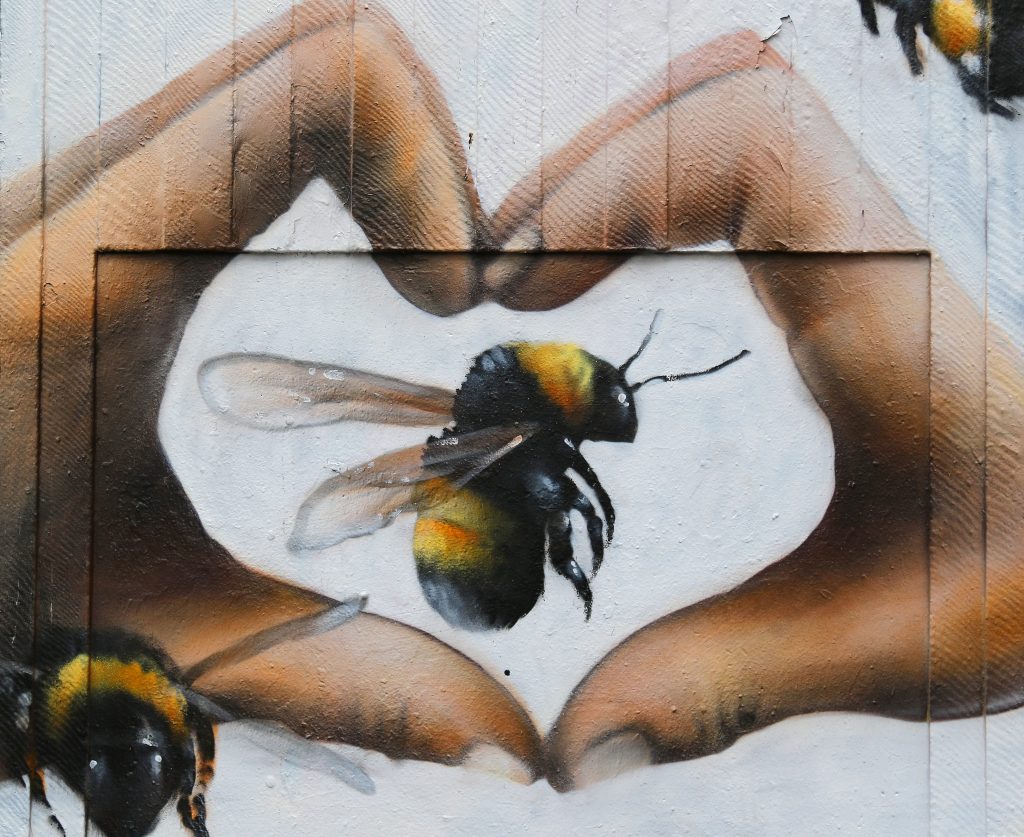
What are the best places to visit in Manchester?
Welcome to Manchester! We’re a little obsessed with our home city and just love sharing it with visitors from all over the world. It’s why we offer foodie walking tours to help visitors learn the real stories of the city and its people.
Whether it’s your first time visiting or you’re coming back for more, we want to share some of the best places to visit in Manchester. Some are the top tourist attractions that you’ll likely find on TripAdvisor and in your travel guides. But, as locals, we also have our own favourite spots we recommend you check out to get a different view of the city.
So, without further ado, some of the top places to check out when visiting Manchester…
Top Tourist Attractions in Manchester
Let’s start off talking about some of the top tourist attractions in Manchester. After all, there’s a reason these are the top spots!
Castlefield
We’re big fans of Castlefield and even wrote about what to do in Manchester’s Canal Basin. You’ll find fascinating history, cool cafes, endless gathering spots, and this is even where you’ll find the Science and Industry Museum (more on that later).
Whatever you’re into, Castlefield can’t be missed when you come to Manchester!
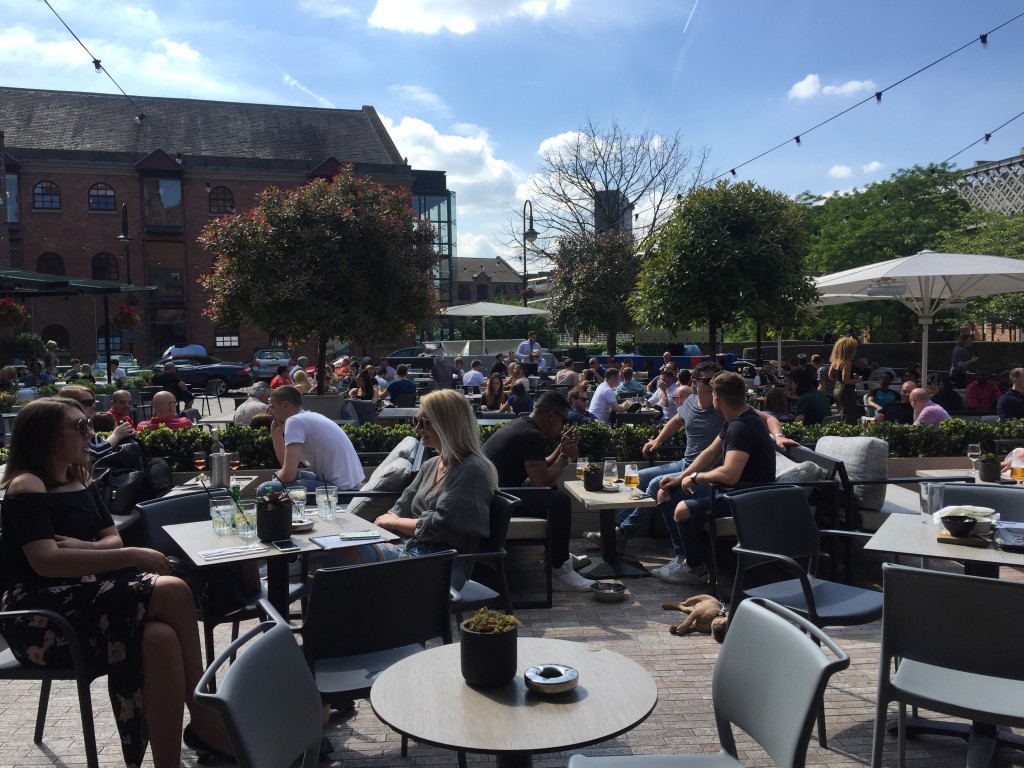
Manchester Cathedral
Officially named “The Cathedral and Collegiate Church of St Mary, St Denys and St George”, Manchester Cathedral is a notable landmark and well worth visiting to admire the stunning architecture for a moment of tranquility. Occasionally, there are even gigs hosted in this beautiful venue!
Old Trafford & Etihad Stadium
The historic home of Manchester United at Old Trafford is the UK’s biggest club football stadium. But don’t miss the state-of-the-art Etihad Stadium, home to Manchester City. With quite the rivalry between the teams (just reference The Derby), football is an intrinsic part of life in Manchester.
Whether you’re a fan or not, visiting the stadiums offers interesting insights and a behind-the-scenes look into two of the world’s biggest football clubs.
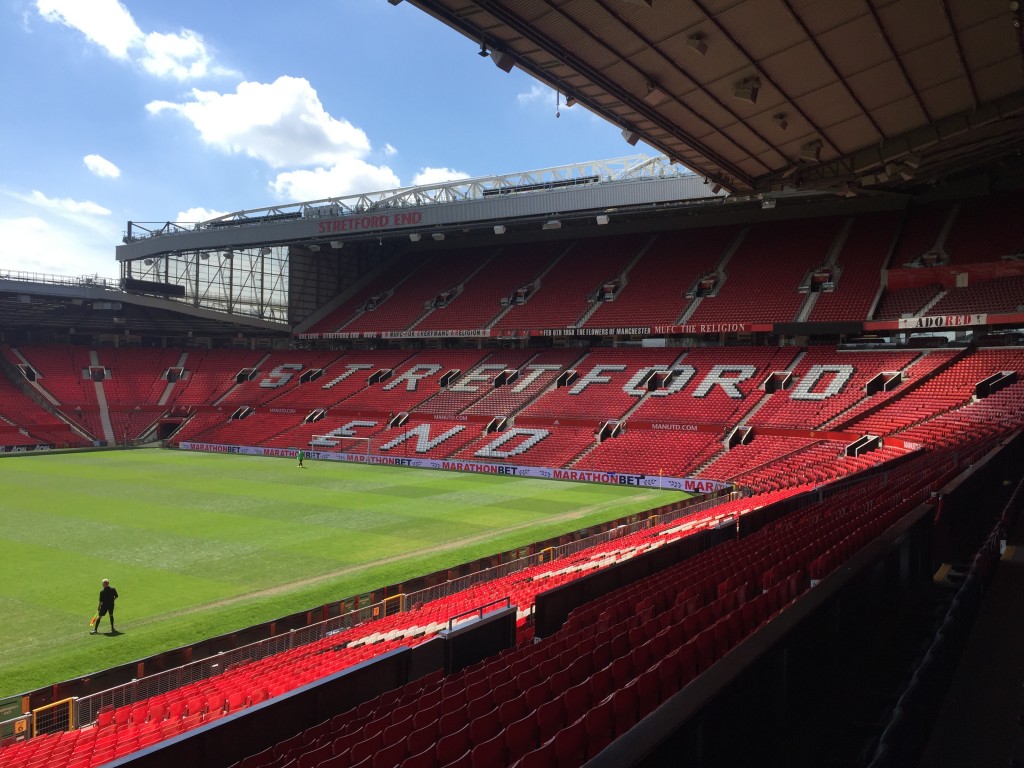
Manchester Town Hall
One of Manchester’s most beautiful buildings, the Town Hall is historic and architecturally significant. It’s often regarded as one of the best examples of Neo-Gothic architecture in the entire UK. The murals in the great hall depict the depth of history here in Manchester, while the clock tower is awe-inspiring.
You can learn more about the story of Manchester’s Town Hall in our blog…or get all the details during one of our Manchester food tours.
Manchester Central Library
Manchester has quite the claim to fame when it comes to libraries: Ours was the first local authority to offer a free library for the general public to access. It opened in 1852, with Charles Dickens in attendance at the opening ceremony! Learn more about the Manchester Central Library and then go visit Manchester’s Parthenon for yourself.

Favourite Local Spots in Manchester
While the top tourist attractions are certainly worth checking out, there are so many local spots in Manchester that you just have to visit! We (obviously) are partial to the food-related spots, but there are plenty of areas to check out all over the city.
Here are some of our top recommendations…
Chinatown
You can’t visit Manchester and skip Chinatown! As one of the largest Chinatowns in all of Europe, you’ll be spoilt for choice when looking for dining options. The Chinese New Year celebrations here are exceptional, so don’t be afraid to visit Manchester in winter!
Want to learn more? We wrote about some interesting history and gave recommendations for Manchester’s Chinatown that you should miss.
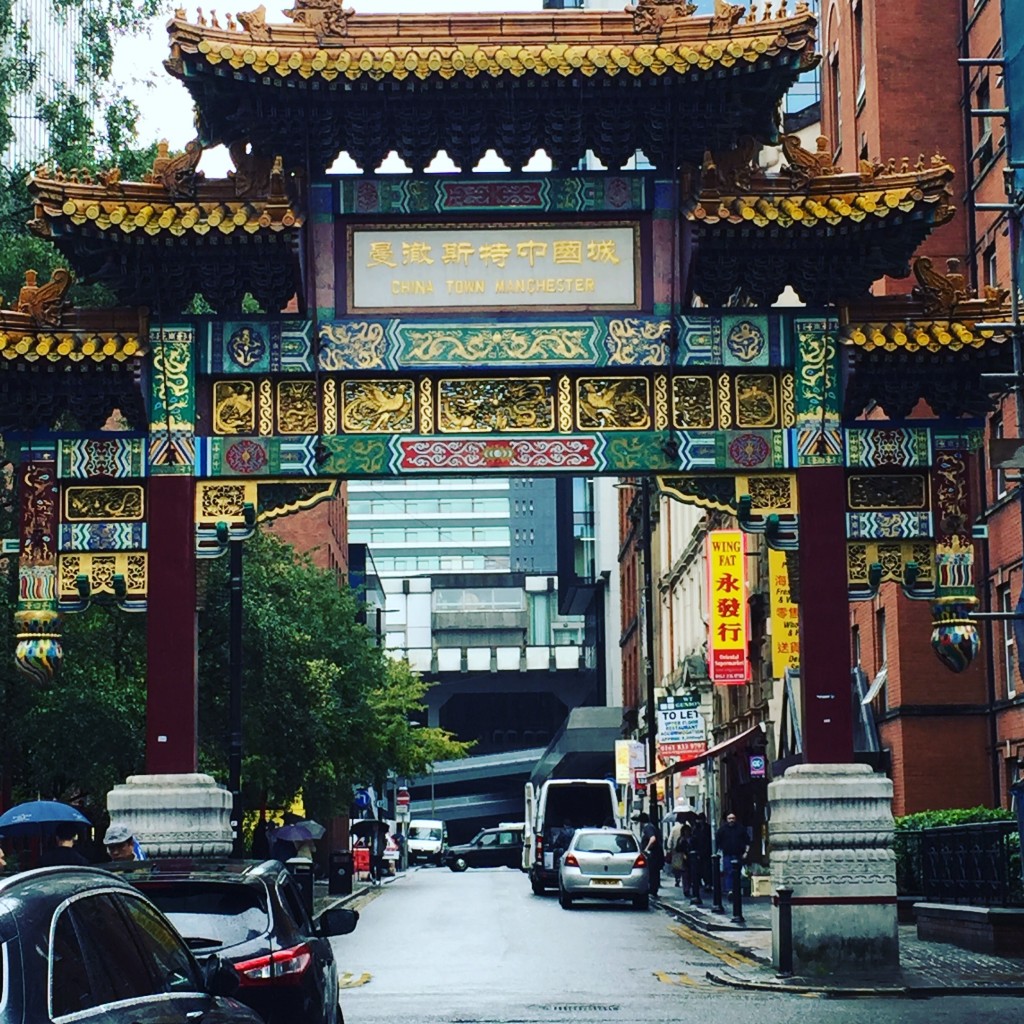
Mackie Mayor Food Hall
One of our favourite spots in Manchester! Mackie Mayor Food Hall is a must-visit in Manchester for its history and its excellent variety of food stalls. Now a Grade 2 Listed Building, this space has adapted and evolved over the centuries to accommodate the changing needs of the community. It’s one of our favourite stops during our Foodie Walking Tours of Manchester.
Altrincham Market House
Altrincham Market House is one of the best things to do in Manchester. We love that story of its revival after a rough period of decline (check out the blog for more details). Nowadays, this is a hot spot for locals with some exceptional food options, live music in the summer, and a positive vibe all around.
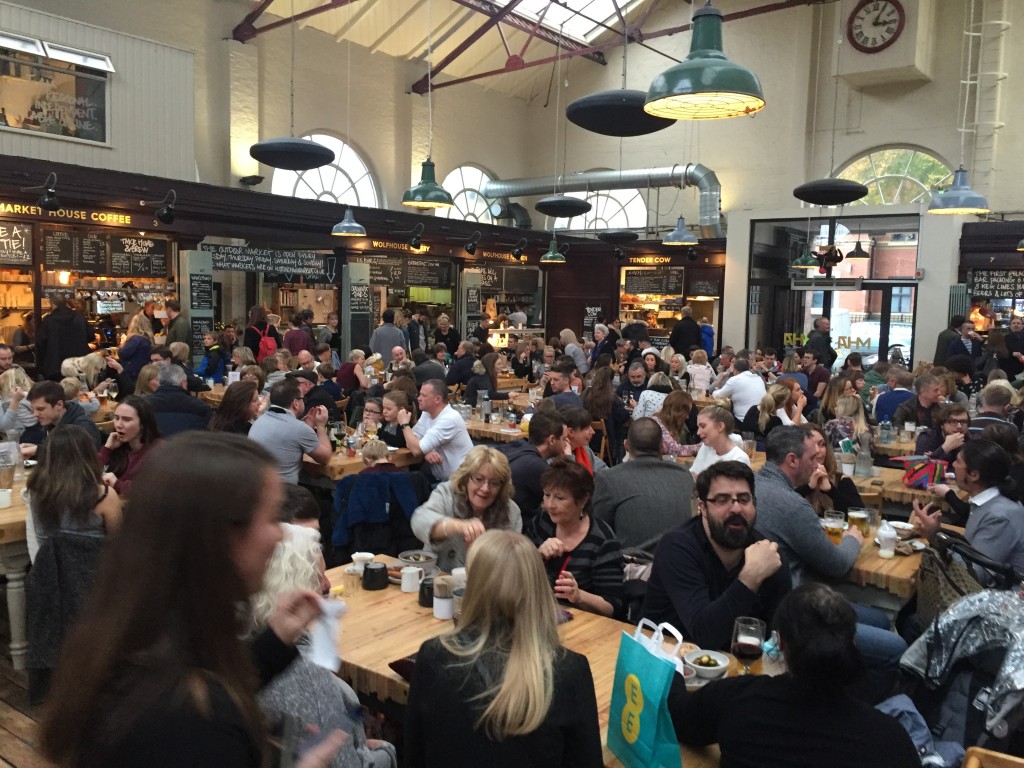
Canal Street
You can’t visit Manchester and not enjoy a night out on Canal Street. Known as the Gay Village, this area boasts plenty of bars, restaurants, and clubs for gathering with friends or making new ones. It’s the spot in town…but if you ask us during a tour, we’d be happy to share our own personal favourite nightlife options.
Manchester Free Trade Hall
This beautiful building boasts plenty of interesting history for Manchester, from corn laws to orchestras. But it might be most recognisable to music fans as the site of “that Dylan concert” that helped change the music industry. It’s now a hotel, but still worth checking out for its architectural beauty and history.
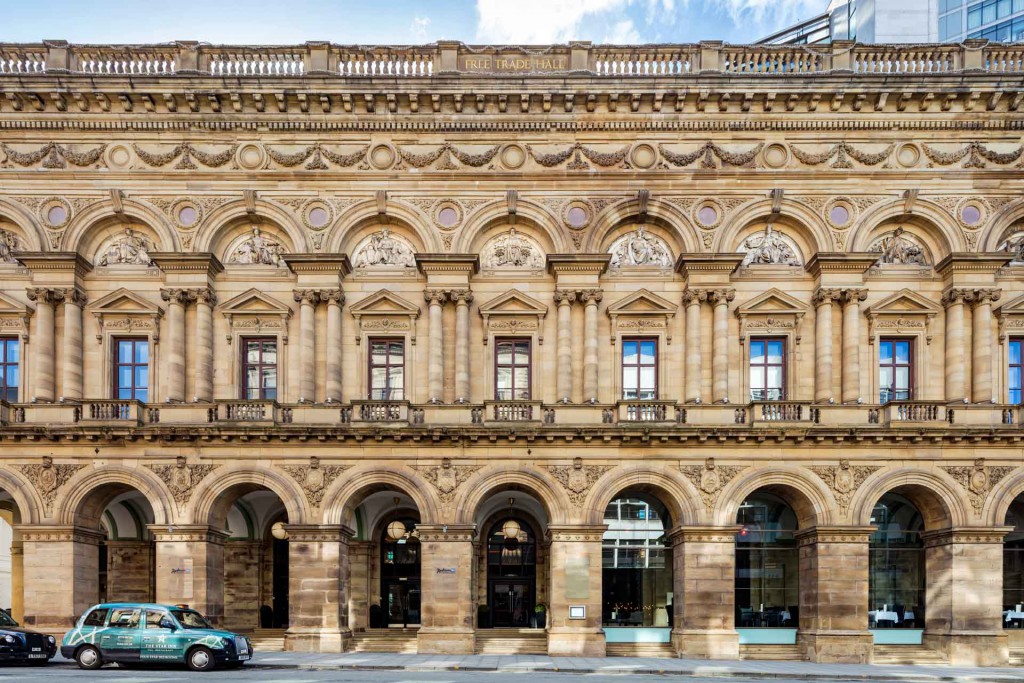
Manchester Craft and Design Centre
We don’t just support local restaurant owners and foodie creatives…we also support local artists! Explore the Northern Quarter and visit the Manchester Craft and Design Centre to purchase locally-crafted, unique items. The creativity here is astounding and it’s certainly a favourite local spot to visit in Manchester.
Top Manchester Museums to Visit
We’re never ones to stop learning, and there are tonnes of museums to visit in Manchester where you can explore everything from local history to pop culture to science and art. This is a city of innovators and creatives, so you’ll have plenty to take in whatever your interests may be!
Here are just some of the top museums we recommend visiting on your Manchester trip…
Science and Industry Museum
One of the top museums in Manchester, the Science and Industry Museum is located in Castlefield so you can enjoy two of our favourite spots. With the industrial past in this city, you can bet that innovation and invention were regular trends here. Check it all out for an educational experience.
Manchester Museum
The Manchester Museum is always popular and for good reason. Its collection is diverse and interesting, spanning from dinosaurs and mummies to beetles and frogs. It’s a great spot for families visiting Manchester, or for those inevitable rainy days.
People’s History Museum
The People’s History Museum shares fascinating information on the history of democracy. Manchester has always been a city of the people, and those people were often fighting for social justice (and often still are). Check this one out to dive deeper into Manchester’s involvement over the years in various social and legal causes.
Imperial War Museum North
Explore the history of war from the First World War through the following century. The Imperial War Museum North is one of the Imperial War Museums, which are a collection of world-class museums highlighting conflict and its impact.
Manchester Art Gallery
The Manchester Art Gallery is centrally located and offers free entry, so it’s certainly worth checking out — especially for an escape from the rain! There is quite a variety of art to enjoy from world-renowned artists.
Pankhurst Centre
Learn about Manchester’s Suffragettes at the Pankhurst Centre, a museum dedicated to telling the story of women’s fight for the right to vote from the building where the movement started.
National Football Museum
If you’re a football fan, beyond visiting the aforementioned stadiums, you should check out the National Football Museum. It offers insight into the history of the game and shares endless stats and details on league history. You can even test your own football skills!
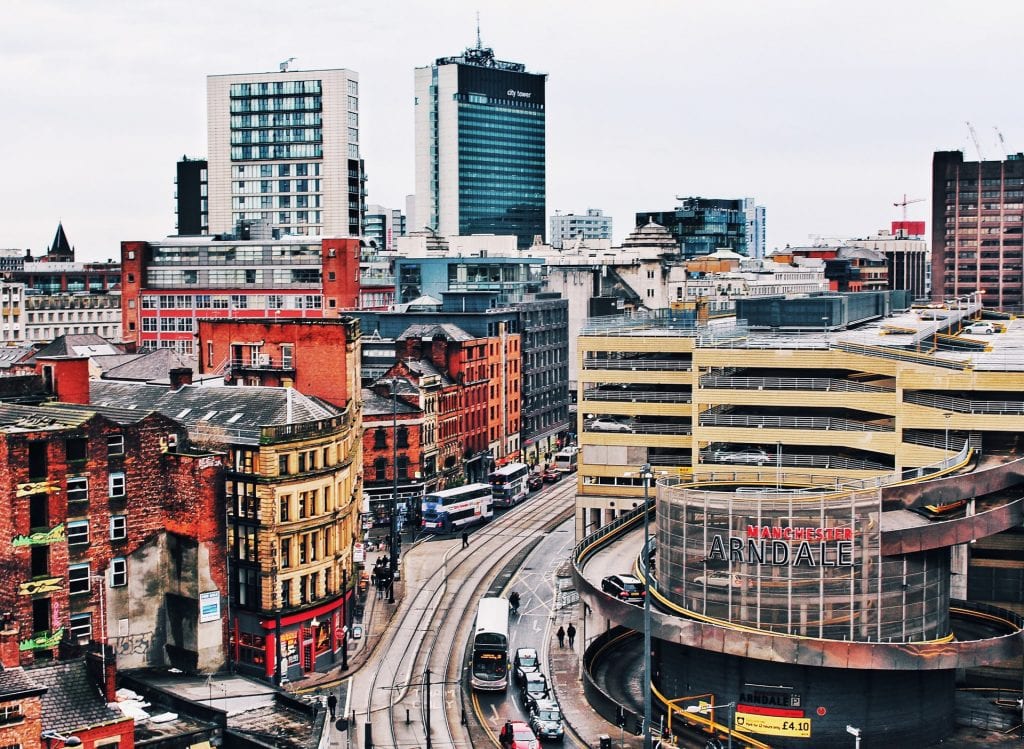
So, what do you think? Are these all the best places to visit in Manchester or did we miss your favourite? We’d love to actually take you to some of our favourite spots during our Manchester foodie tours. We’re all about sharing the stories of the people behind the food, the people who make this city so great. Come join us and enjoy the best of Manchester!

